Transcript of Why Continuous Learning Matters for Today’s Professionals written by John Jantsch read more at Duct Tape Marketing
Back to Podcast
Transcript

John Jantsch: This episode of The Duct Tape Marketing Podcast is brought to you by Klaviyo. Klaviyo is a platform that helps growth-focused eCommerce brands drive more sales with super-targeted, highly relevant email, Facebook and Instagram marketing.
John Jantsch: Hello and welcome to another episode of The Duct Tape Marketing Podcast. This is John Jantsch, and my guest today is Matt Cooper. He is the CEO of Skillshare. Skillshare is an online learning community with thousands of classes in design, business, tech, you name it. So Matt, thanks for joining me.
Matt Cooper: Thanks for having me.
John Jantsch: Let’s start with some statistics. Skillshare’s been around for a while. How old? How many courses do you spout? How many teachers do you spout? Kind of give us the scope.
Matt Cooper: Yeah, yeah, so the company was founded back in 2011. Actually, the first version of the business was in-person classes, so kind of somewhere between a meetup and general assembly. So they’re in-person, but it still kind of had that community feel that we still have online today. They moved everything to the online model in late 2013, early 2014, and that’s when kind of landed on the current online learning business model. We have over 20,000 classes, close to 8,000 teachers, we have over eight million registered students. So obviously when you move things online, it gets a little more scalable, so that’s when we really saw the growth start to take off.
John Jantsch: Yeah, and I’m guessing hundreds of countries.
Matt Cooper: Yes, we’re actually in pretty much every country I’m aware of. So it is an increasingly global community. Actually about 60% of our teachers are outside the US, and about half of all new users are outside the US. So it has become increasingly global over the years.
John Jantsch: Yeah, I guess that was my next question. Is there a typical student profile?
Matt Cooper: We have focused in on creative as our real sort of core vertical and core area of expertise over the last 12, 18 months, in particular. It’s always been sort of a default area of focus, but we’ve really zoned in on that as our primary market recently. So I would say the kind of the prototype type user for Skillshare is a freelance designer, that maybe is working a little bit in online work, has some local clients as well, but is coming to Skillshare to keep current and see what’s hot, what’s new, learn new pieces of software, learn new techniques, et cetera.
John Jantsch: So, it might be an InDesign class or it might actually be a class on how to choose colors. I mean, it’s not just all just here how to use the software?
Matt Cooper: That’s right, yeah. So I’d say it’s split between kind of the “hard skills.” How do you use InDesign or Light Room or Procreate, or it’s more sort of technique-driven. So specific, how do you use that software to do certain things? So about probably 30% of our classes are either about an Adobe product or included in Adobe product. So even when you’re learning technique classes, they might be using a particular software, so you’re getting some tips and tricks on how to put that software to work along the way.
Matt Cooper: One of the key components though of every class is that they are project-focused. As you know, you learn a lot better when you put it to work. So we want you to take the class, pick up a skill, but then actually produce something with it. You upload it to the site, you get feedback from our students, from your teacher. So it’s just a great way to kind of actually get some real life practice and get some feedback on your work.
John Jantsch: The first online course I ever took was on Aldus PageMaker 3.0. You might not-
Matt Cooper: Wow. Were they even online back then?
John Jantsch: Well, Linda, actually, was at least that old, that was a class I took through them. But I always throw that out, because I judge how old somebody is, whether or not they actually even know what I’m talking about.
Matt Cooper: Unfortunately, I do know exactly what you’re talking about.
John Jantsch: So, let’s flip that around then. Who is the kind of standard teacher then?
Matt Cooper: Yeah, so about 80% of our teachers are freelancers themselves. So they tend to be active in that field, doing the work day to day. So when you watch a Skillshare class, it has the feel of looking over the shoulder of an expert. We want it to have that sort of very practical, very useful, not academic, not esoteric, not theoretical vibe. So the teachers, again, they are active in the field. This tends to be one of the ways that they generate additional income, build a brand for themselves, give back to the creative community and just generally establish credibility within their particular area of expertise.
John Jantsch: So, what’s the qualification to be a teacher? I mean, there are people that know how to use a piece of software or know how to actually get stuff done, but they don’t necessarily know how to teach somebody else to do it. I mean, how do you vet what makes a good educator?
Matt Cooper: Yeah, the platform is completely open, so anyone can come in and teach. That said, we do have certain standards around audio quality, video quality, educational content. You have to be imparting your knowledge, not … we’ve had people try to walk you through how to use a website, that’s not what we’re looking for. So, we do have a team that screens and moderates every class that gets uploaded, so they do have to meet our quality bar. If they meet our quality bar, then they’re live on the site, and the teachers are welcome to produce that content and keep teaching.
Matt Cooper: So, for us, it’s sort of a balancing act. We want to open up, we like the long tail. If you produced a great class in a niche category that may not get a lot of eyeballs, that’s perfectly fine. That’s, again, the beauty of open platform like Skillshare, is you can find a depth and breadth of content that you’re just not going to find anywhere else. But it is our responsibility to make sure that the quality is high, and what our paying users expect to see.
John Jantsch: So aside from some sort of revenue share, and maybe this is just anecdotal, but what benefits are you seeing some of the teachers derive, beyond maybe making a little extra money?
Matt Cooper: Yeah, so the income’s the obvious one. But I think what we see a lot of is just teachers trying to build their own brand and using their Skillshare class as a way to establish their credibility. If you produce a Skillshare class and you’ve got a one to two hour course up on that particular subject, and you’ve got thousands of students and you’ve got feedback and you’ve got interactions, it’s very easy to send your offline clients to Skillshare as a way to show off your credibility.
Matt Cooper: So we see that and hear that quite a bit from teachers. We also hear a lot about wanting to give back. Many of our teachers actually started out as students, and that’s actually our number one source of new teachers, is our student community. So as the student community grows, they tend to convert into teachers as they develop particular areas of expertise, or they may come into learn one subject, but they’re an expert in something else. So having that student community be a major feeder for the teacher community, a lot of them just like the idea of being able to share what they’ve learned and hopefully help someone else that was in their position.
John Jantsch: Want to remind you that this episode is brought to you by Klaviyo. Klaviyo helps you build meaningful customer relationships by listening and understanding cues from your customers, and this allows you to easily turn that information into valuable marketing messages. There’s powerful segmentation, email autoresponders that are ready to go, great reporting.
John Jantsch: You want to learn a little bit about the secret to building customer relationships? They’ve got a really fun series called Klaviyo’s Beyond Black Friday. It’s a docu series, a lot of fun, quick lessons. Just head on over to klaviyo.com/BeyondBF, Beyond Black Friday.
John Jantsch: Is there a way for something, you mentioned creatives, but even the creatives, a lot of them either have businesses or want to run businesses, and so maybe they’re trying to build a curriculum, if you will. I know that if I went there and saw 30,000 courses, I’d drown in a sea of courses and find myself probably wasting a lot of time. Is there a way for somebody to actually design kind of a learning path that makes sense for them?
Matt Cooper: There is, we have a couple of features that allow that. I mean, you can create custom lists and basic bookmark classes as you go. So I do that. As I’m looking at what’s new, what just came on, the system is obviously recommending classes that it thinks I might be interested in. I can quickly bookmark them, add them to a list, so then I can go back later and, “All right, I’m interested in taking a class on brand marketing today.” I can pull up my playlist of brand marketing classes and pick one and off I go.
Matt Cooper: The search functionality and browse functionality allows you to get pretty specific in what you’re looking for. So we’ll hear students, where they’ll find a class and they’ll actually skip the first three lessons and just go to lesson four, because that one talks about the specific technique or tool or formula that they’re trying to learn. So you see a lot of that when you look at the user behavior, they tend to bounce around and go into specific areas or they might watch the same class three or four different times, or they’ll watch the exact same topic taught by three or four different teachers, to get it from different angles.
Matt Cooper: So, you definitely see patterns of how people tend to group and use content. But again, that’s the beauty of our subscription model, once you pay your $15 a month or $99 a year, you can watch as much as you want. So we like that model, because it allows you to explore and try and test. You may come in looking to learn Photoshop, but if you want to take the coffee making class, it’s there. Knock yourself out, hope you enjoy it.
John Jantsch: Have you found organizations kind of using this platform as a training bed?
Matt Cooper: We have. Our enterprise business is growing quite well. I think when you look at where companies want to insert learning and development, how they think about developing their employees, the traditional model of sticking the old school training content in front of them and hoping they don’t fall asleep, it doesn’t work. So when you look at Skillshare’s content, because of the creative bent, if you’re coming in looking for compliance content or how to write a professional email, that’s probably not where we’re going to help you.
Matt Cooper: If you want Skillshare to help you create a more creative culture and build that mindset within your employees, yeah, I think we land somewhere between a learning and development tool and a perk. Because there’s a lot of content that’s not going to apply to their day to day work, it still might make them a better person and a better employee. So what we hear from our enterprise customers, is they’re really thinking of it more as an investment in their team, as opposed to, “We’re going to give you the skills, so you can then give us back specific work.”
John Jantsch: Yeah, yeah, and upping their crochet game’s going to make them happier, right?
Matt Cooper: Exactly.
John Jantsch: So there’s a quote on your website with a young woman saying, I love Skillshare or something. But the gist of it was, I wonder if I even needed to go to college. Are learning communities going to replace or at least be the new school?
Matt Cooper: That’s been an ongoing question since the whole MOOC model really started to take hold. You certainly hear anecdotes of people who … I mean, you look at what’s available. You can take Stanford classes online, you can take Skillshare classes online, you can go to Coursera and Udacity. So if you were motivated and you wanted to piece together a Ivy league education combined with very tactical, hands-on learn by doing skills that you get from a platform like Skillshare, you can certainly do it. I think we’re a little ways away.
Matt Cooper: I don’t know that the traditional education model can keep up with the pace of change within the current corporate environment. So that is where a platform like Skillshare can play a really major role. When Adobe comes out with their new software, you’re not going to run down to the community college next week and take it, it just doesn’t work that way. So, I think there is an increasing role for online learning to play, I don’t know that it’s going to supplant the traditional college education in the near future.
Matt Cooper: That said, I’ve got four daughters, and if I wanted to go the bargain basement route, I’d have them take an online coding bootcamp, pepper in some good creative classes on Skillshare, and off they go. They’ll be making six figures at Google before we know it.
John Jantsch: Well, and I think a lot of people, a lot of individuals, but a lot of companies, I think, have started to recognize that idea of the role of continuous learning. No matter what, I mean, you’re never done.
Matt Cooper: Right, yep.
John Jantsch: So having this kind of platform certainly supplements, if nothing else, that. This is the part of the show where I get to also say I have four daughters too. That’s the first person I think I’ve had on my show that has had four daughters.
Matt Cooper: Yeah, we have similar scars.
John Jantsch: Mine are up earning a living already though.
Matt Cooper: Oh, man. Mine are currently income negative.
John Jantsch: So, if you are in a strategic planning meeting at the end of the year and you’re kind of telling your team, “We need to shore up this area of our, not of the system itself, but of the courses.” Are there areas that you feel like, “Hey, we’re weak on and we need to add.”
Matt Cooper: Yeah. Well, I mean, again, I think the big change for us was really focusing in on creative. So when we think about content, where we want to focus, it tends to expand out. So, I think there’s a general category of if you are a freelance designer, what are the other areas that you need to know to be better at your job? So whether that’s business for freelancers, whether it’s how to brand yourself as a freelance. With the whole movement towards the gig economy and the future of work, I think there’s a whole group of content that we have started to dip into. There’s some Skillshare originals that we’ve produced in that area, so that’s a particular area of focus.
Matt Cooper: I think the other area that we’re just constantly trying to stay ahead of is just the evolution of technology. Adobe is rolling out Fresco, their new painting and drawing app for the iPad. We’ve got to get ahead of that. We’ve got teachers who have advanced copies, they’re working on content right now. What’s coming that we don’t know about? I think an interesting example, 12 months ago was the iPad drawing software called Procreate. We really didn’t know what Procreate was, and all of a sudden one of our teachers created a Procreate class and it blew up, and we saw all this attention around Procreate. Then okay, boom, there’s a signal that we need to get on that.
Matt Cooper: So the beauty, again, the beauty of the open platform is our teachers, our community, tend to signal what’s hot and what’s interesting, and then we know to go deep in that area. So on the content side, in terms of overall content strategy, yes, we try to predict when we can, but in many cases, we’re reacting to where the world’s heading and to what our community is telling us is interesting, then we try to make sure we’re putting resources in those areas.
John Jantsch: So if I want to put a obscure part on a 2009 Mini Cooper S, I can find a YouTube video on exactly how to do that. So, what’s the advantage of a platform, as opposed to the fact that boy, people are making videos, millions of them a day, to teach people how to do stuff?
Matt Cooper: Yeah, I think the number one issue is just the signal to noise ratio. You can find great content on YouTube, there’s no doubt. But what you don’t get is the consistency, the predictability, all of the functionality. You don’t get the positivity, the community. So I think there are specific things about our platform that you just can’t get on YouTube. Interestingly, YouTube is probably our number one source of new customers. So, there’s sort of a symbiotic relationship between Skillshare and YouTube. A lot of our users start on YouTube and they end up in Skillshare, because they don’t find what they want or they can’t find it consistently enough.
John Jantsch: Huh. So what’s the future of Skillshare? Or what’s the future of platforms like Skillshare?
Matt Cooper: I think for us, specifically, we ultimately want to be the go-to global destination for online creative learning. We want to provide that creative community, whether again, you’re a professional or if it’s just a passion. Whether you’ve been doing it for years or it’s sort of reigniting that creative spark, we want to provide the place where you can learn about the things that excite you, learn about the things that drive you, open up that creative journey for you going forward.
Matt Cooper: So, if we can continue to provide the right content, but then also really think about that community. I think that’s something that, as I talk to users, I talk to at least two teachers and two students every week, and that has been a consistent theme, is there’s just a community you get through Skillshare that you can’t find anywhere else. When we see a student in South Africa and a student in Berlin start to collaborate because of a class they took taught by a teacher in New York city, that’s the magic that we want to happen. So how do we continue to do that on a massive global scale and just be that go-to destination for that community?
John Jantsch: So if I’m a student, it’s pretty easy. Invite me there, and there are free classes, there’s a trial. What’s the model for that as a new student?
Matt Cooper: Yeah, so new students coming in, so we do have about 2,000 classes that are free. So each teacher can decide whether they want their class to be free or paid. If it’s a paid class, then it becomes part of the premium platform. But we offer, just coming in the door on the website, we offer one month free trial right now. Those free trial offers sort of come and go, as you would imagine. But typically, you can get a one month free trial at least, and then try it out. Jump on, watch some classes, bookmark some content that’s interesting to you, and see if that’s going to deliver the value that you’re looking for. So we like the idea of them being able to really try it and explore and dig around before making the commitment.
John Jantsch: So if I’m a teacher or I have something I want to teach, what’s my next step?
Matt Cooper: So if you go to skillshare.com/teach, we have a great program to get new teachers up and running. I would call it the teach challenge, and we have a bunch of online help content. We have forums, you can ask questions, you can get feedback on your course outline, we walk you through what equipment you need. It’s a lot of just very simple tips and tricks, you know what I mean? For a $40 Snowball mic off Amazon, can work wonders. So we walk you through all the basics, and one of our community managers on the teacher’s side will actually kind of help you just go through it step by step to get that first class up and running.
John Jantsch: Awesome. Speaking with Matt Cooper, the CEO of Skillshare, and it’s just skillshare.com. So Matt, thanks so much joining us, and hopefully we’ll run into you soon out there on the road.
Matt Cooper: Great. Thanks for having me.
from Duct Tape Marketing https://ift.tt/3452fbG
via
IFTTT



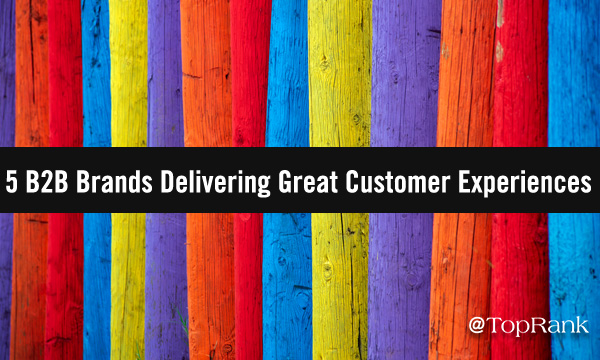
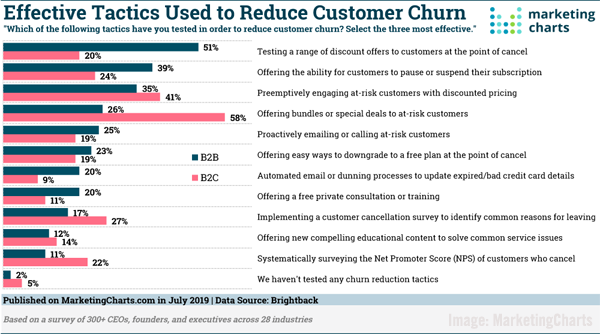 In the following randomly-ordered list, we’ll look at five B2B brands that are innovating with customer-pleasing digital experiences.
In the following randomly-ordered list, we’ll look at five B2B brands that are innovating with customer-pleasing digital experiences.
 IBM publishes both a print and digital version of a magazine, with its award-winning
IBM publishes both a print and digital version of a magazine, with its award-winning 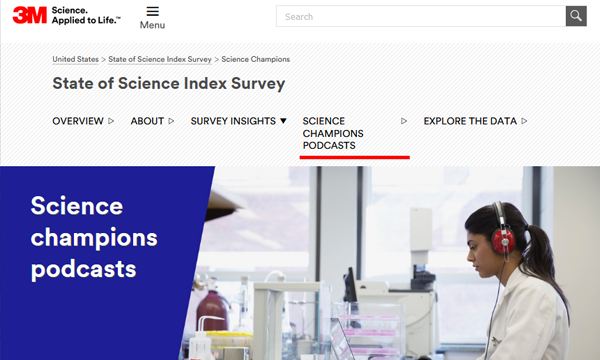 At TopRank Marketing we are B2B influencer marketing specialists, and have recently worked to feature influencers in our client
At TopRank Marketing we are B2B influencer marketing specialists, and have recently worked to feature influencers in our client 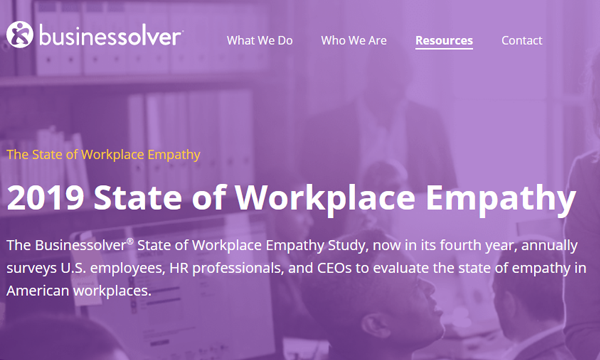 Employee benefits administration technology firm Businessolver sought to connect with customers through conducting a study of empathy in the workplace, causing professionals to take a close look at what has recently been seen as the rising importance of empathy among workers in all fields. Businessolver's
Employee benefits administration technology firm Businessolver sought to connect with customers through conducting a study of empathy in the workplace, causing professionals to take a close look at what has recently been seen as the rising importance of empathy among workers in all fields. Businessolver's 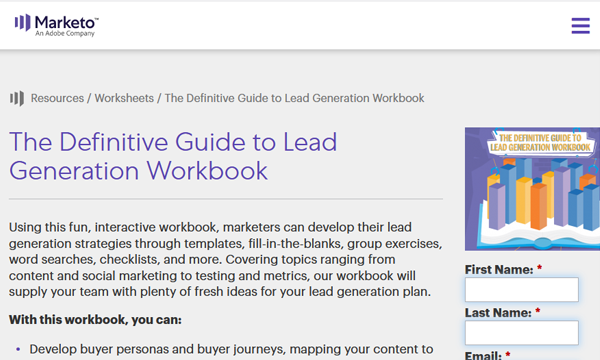 Each year marketing software firm Marketo creates a
Each year marketing software firm Marketo creates a 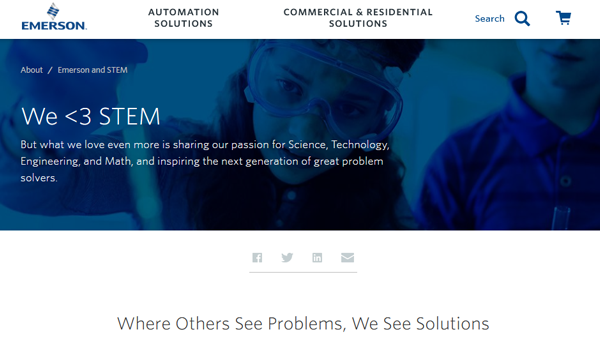 Global technology and engineering firm Emerson has worked to increase the next generation’s interest in Science, Technology, Engineering, and Math (STEM), and has conducted and released its
Global technology and engineering firm Emerson has worked to increase the next generation’s interest in Science, Technology, Engineering, and Math (STEM), and has conducted and released its  When it comes to delivering great customer expectations, IBM, 3M, Businessolver, Marketo, and Emerson have given us five examples of what can be done with award-winning effort, sizable resources, and an abundance of time. Considering the extensive effort required to produce top-quality customer experiences today, many B2B brands are turning to professional agency help from firms such as TopRank Marketing, the only B2B Marketing agency offering influencer marketing as a top capability in Forrester’s most recent “
When it comes to delivering great customer expectations, IBM, 3M, Businessolver, Marketo, and Emerson have given us five examples of what can be done with award-winning effort, sizable resources, and an abundance of time. Considering the extensive effort required to produce top-quality customer experiences today, many B2B brands are turning to professional agency help from firms such as TopRank Marketing, the only B2B Marketing agency offering influencer marketing as a top capability in Forrester’s most recent “


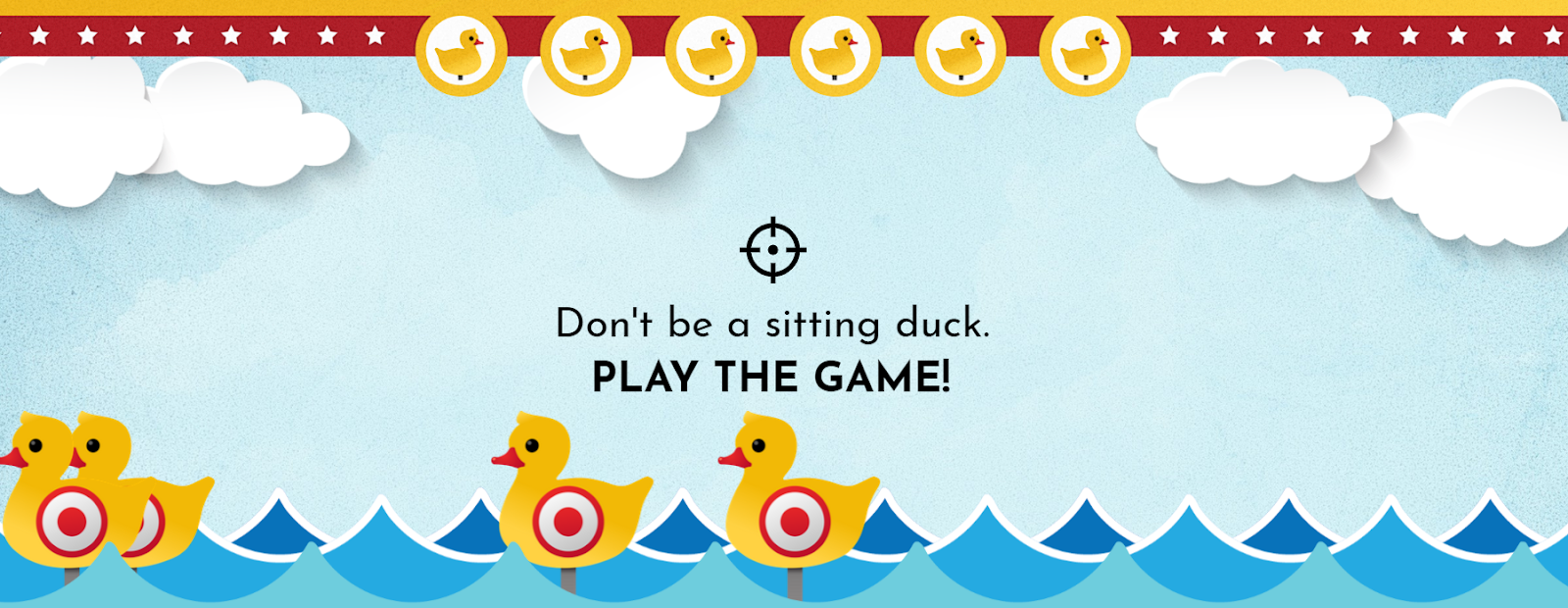 [bctt tweet="A memorable experience goes a long way. - @AmishaGandhi on raising the bar for content experiences #CMWorld" username="toprank"]
[bctt tweet="A memorable experience goes a long way. - @AmishaGandhi on raising the bar for content experiences #CMWorld" username="toprank"]
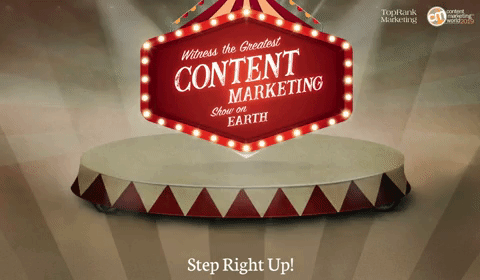

 On today’s episode of the Duct Tape Marketing Podcast, I chat with Matt Cooper, CEO of
On today’s episode of the Duct Tape Marketing Podcast, I chat with Matt Cooper, CEO of 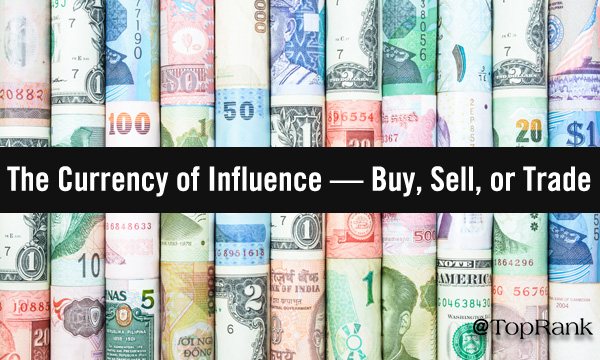
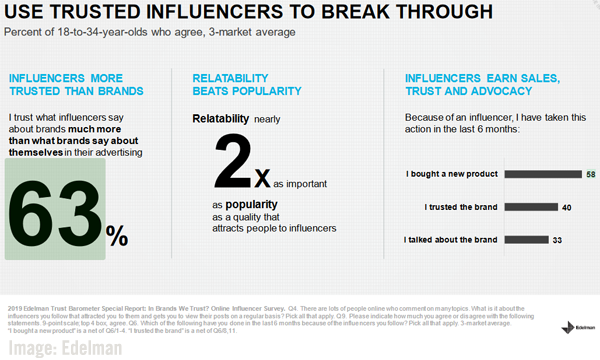 As the internet has matured since its 1991 creation, networking between people around the world has expanded to truly astounding heights, helping make wonderful projects and partnerships happen. [bctt tweet="It’s not about who has the most followers, or the gaudiest personal brand. It’s about who resonates most with your specific customers and prospects. — Nick Nelson @NickNelsonMN" username="toprank"] By learning the importance of influence, how best to incorporate it into your own life and marketing, and how to deal with some of its primary challenges, B2B marketers and brands can harness the power of influence and reach new levels of business and personal success. Whether you call it influence, networking pull, or professional persuasion, connecting with successful people in your industry will bolster your own efforts both today and long into the future.
As the internet has matured since its 1991 creation, networking between people around the world has expanded to truly astounding heights, helping make wonderful projects and partnerships happen. [bctt tweet="It’s not about who has the most followers, or the gaudiest personal brand. It’s about who resonates most with your specific customers and prospects. — Nick Nelson @NickNelsonMN" username="toprank"] By learning the importance of influence, how best to incorporate it into your own life and marketing, and how to deal with some of its primary challenges, B2B marketers and brands can harness the power of influence and reach new levels of business and personal success. Whether you call it influence, networking pull, or professional persuasion, connecting with successful people in your industry will bolster your own efforts both today and long into the future.
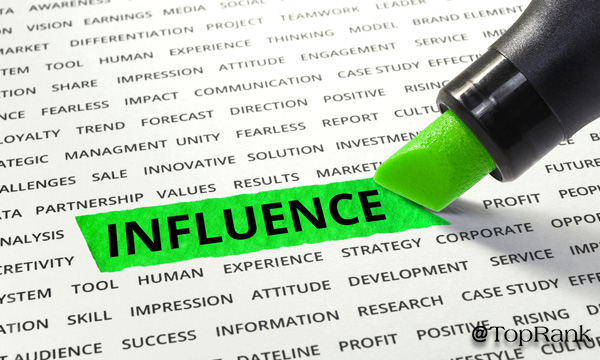 Successfully wielding online influence today puts the world at your fingertips. As with gold or paper money, the currency of influence can be earned, accumulated, spent, traded, or used towards philanthropic causes. When influence is willingly shared it has the special quality of creating other new introductions and connections, setting in motion a sphere of professional networking and knowledge that can keep growing as long as you put in the effort to understand and maintain it. [bctt tweet="Working with influencers is about building solid relationships that last over time, not just a summer fling. — Ashley Zeckman @azeckman" username="toprank"] Just as influence comes in vastly varying degrees, so to do influencers, who can take the form of micro-influencers or other specialty varieties.
Successfully wielding online influence today puts the world at your fingertips. As with gold or paper money, the currency of influence can be earned, accumulated, spent, traded, or used towards philanthropic causes. When influence is willingly shared it has the special quality of creating other new introductions and connections, setting in motion a sphere of professional networking and knowledge that can keep growing as long as you put in the effort to understand and maintain it. [bctt tweet="Working with influencers is about building solid relationships that last over time, not just a summer fling. — Ashley Zeckman @azeckman" username="toprank"] Just as influence comes in vastly varying degrees, so to do influencers, who can take the form of micro-influencers or other specialty varieties.  Who really has influence and who is merely claiming to? Building influence is time-consuming, so why should I even bother? There’s little doubt that celebrity influencers have faced increasing skepticism, but the process of finding true B2B industry experts who are hyper-relevant to your industry is as important as ever, and we’ve looked at how to go about this in several recent pieces:
Who really has influence and who is merely claiming to? Building influence is time-consuming, so why should I even bother? There’s little doubt that celebrity influencers have faced increasing skepticism, but the process of finding true B2B industry experts who are hyper-relevant to your industry is as important as ever, and we’ve looked at how to go about this in several recent pieces:
 Measuring influence has changed over time and will continue to evolve. Will the ability to achieve and grow online influence remain fully accessible to everyone, or will those holding little influence and clout face insurmountable obstacles in the future? Will a backlash against celebrity influencers — or perhaps even
Measuring influence has changed over time and will continue to evolve. Will the ability to achieve and grow online influence remain fully accessible to everyone, or will those holding little influence and clout face insurmountable obstacles in the future? Will a backlash against celebrity influencers — or perhaps even  Whether you call it influencer marketing or working with top relevant experts in your industry, the quality of influence itself has a timeless and unmistakable power to drive successful marketing campaigns. [bctt tweet="When identifying and qualifying influencers, go beyond what the numbers are and see what that data really means. — Amisha Gandhi @AmishaGandhi" username="toprank"] Here are three articles with examples of how influencer marketing has helped B2B firms achieve strong results:
Whether you call it influencer marketing or working with top relevant experts in your industry, the quality of influence itself has a timeless and unmistakable power to drive successful marketing campaigns. [bctt tweet="When identifying and qualifying influencers, go beyond what the numbers are and see what that data really means. — Amisha Gandhi @AmishaGandhi" username="toprank"] Here are three articles with examples of how influencer marketing has helped B2B firms achieve strong results: